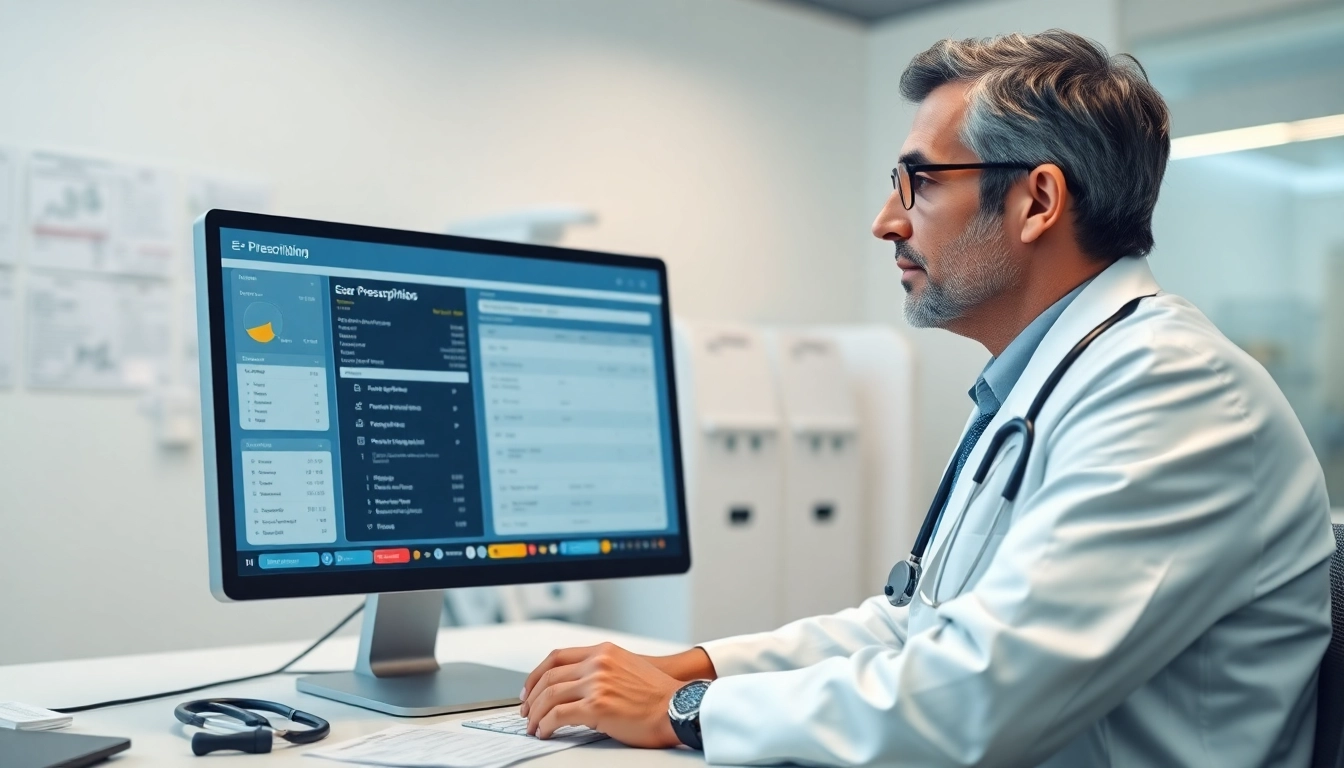Understanding Top Rated Prescription Applications
In the rapidly evolving landscape of healthcare technology, top rated prescription applications are becoming integral to patient care and medical practice efficiency. These applications not only streamline the prescribing process but also enhance communication between patients and healthcare providers. Understanding their functionalities, advantages, and implementation strategies is paramount for both practitioners and patients.
What Are Prescription Applications?
Prescription applications, often referred to as prescription management or medication management apps, are software solutions designed to assist healthcare providers in crafting, managing, and dispensing prescriptions. These applications can be utilized by clinicians to ensure accurate medication management and by patients to monitor their prescriptions effectively. They often incorporate features such as drug interactions checks, refill reminders, and access to medication histories, thus improving the overall quality of care provided.
Importance of Top Rated Prescription Applications
The importance of utilizing top rated prescription applications cannot be overstated. These apps serve a dual purpose: they enhance clinical decision-making and empower patients to take charge of their health. With a growing number of prescriptions being issued, the complexity of medication management increases. Top-rated applications reduce the chances of medication errors, ensure adherence to prescribed regimens, and facilitate seamless communication between healthcare providers and patients.
How They Benefit Patients and Providers
Both patients and healthcare providers experience numerous benefits from top rated prescription applications. For patients, these applications provide convenience and empowerment; they can track their medications, set reminders for doses, and access educational resources about their prescriptions. For healthcare providers, these applications enhance productivity by automating prescription processes, reducing the time needed for administrative tasks, and minimizing the likelihood of errors related to illegible handwriting or drug interactions.
Key Features of Top Rated Prescription Applications
User-Friendly Interfaces
A significant aspect of top rated prescription applications is their user-friendly interfaces. These apps are designed with the end-user in mind, ensuring that both healthcare professionals and patients can navigate them with ease. Simplicity in design often leads to higher user satisfaction and greater adherence to medication regimens, as patients are more likely to engage with applications that are straightforward and intuitive.
Integration with Health Records
Integration with electronic health records (EHR) is a fundamental feature of top rated prescription applications. This ensures that all patient information—including medication histories, allergies, and existing health conditions—is readily available. As a result, healthcare providers can make informed decisions when prescribing medications, significantly reducing the potential for adverse drug reactions and fostering better overall health management.
Data Security and Privacy Measures
In an age where data breaches are all too common, robust data security and privacy measures are essential features of top rated prescription applications. These applications must adhere to strict regulations such as HIPAA in the United States, ensuring that patient information is encrypted and securely stored. Patients need to trust that their sensitive information is safe while accessing their prescriptions via these apps.
Comparing Popular Top Rated Prescription Applications
Functionality and Usability
When comparing various prescription applications, functionality and usability are crucial criteria. Applications that offer features such as dosage calculators, drug interaction alerts, and refill reminders typically rate higher. Furthermore, usability determines how easily both patients and providers can navigate the system, perform necessary tasks, and retrieve relevant information efficiently. Analyzing user feedback and performance metrics is vital for identifying applications that excel in these areas.
User Reviews and Ratings
User reviews and ratings provide insight into the actual experiences of those utilizing these applications. High ratings often reflect user satisfaction, while consistent feedback pointing out specific issues can help developers address common challenges. Monitoring reviews across multiple platforms can inform healthcare providers and patients alike about the effectiveness of each application.
Cost-Effectiveness and Accessibility
Cost-effectiveness is another critical factor when assessing top rated prescription applications. Many applications offer free versions with limited features or tiered pricing models that cater to different needs. Accessibility, focusing on how easily patients can obtain and use the application, is paramount; applications should be available on various platforms (iOS, Android, web) to ensure patients can engage with their healthcare management anytime, anywhere.
Implementing Top Rated Prescription Applications in Practice
Steps for Integration into Workflow
Integrating top rated prescription applications into existing workflows requires a methodical approach. Healthcare facilities should first assess their specific needs and the features offered by various applications. Following this, a pilot program can be initiated, allowing a small group of users to engage with the application and provide feedback. Once refined, widespread implementation can be launched, accompanied by comprehensive guidelines to ease the transition.
Training Staff and Patients
Training is essential for successful integration of these applications. Healthcare providers should undergo thorough training sessions to become familiar with using the application effectively, while educational resources should be made available to patients. Workshops, user manuals, and FAQs can significantly improve user engagement and ensure patients can maximize the benefits of the application.
Monitoring App Performance and Feedback
Ongoing monitoring of application performance is crucial to determine how effectively the app meets its goals. Regular assessments through user feedback, app analytics, and clinical outcomes can help identify areas requiring improvement. This iterative approach ensures that the application remains relevant and effective within the evolving landscape of healthcare management.
Future Trends in Top Rated Prescription Applications
Advancements in Technology
The field of medicine is continually evolving, and technological advancements will further shape the future of top rated prescription applications. Emerging technologies, such as artificial intelligence and machine learning, are poised to enhance predictive analytics, allowing for more personalized medication management. Additionally, the incorporation of wearable health technology could lead to real-time monitoring of patient health metrics alongside medication adherence.
Regulatory Changes Impacting Usage
Regulatory environments surrounding healthcare technology are ever-changing. Future trends will likely be influenced by new legislation focused on improving privacy protections, interoperability, and accessibility of healthcare data. As regulations evolve, top rated prescription applications must adapt to meet these standards while continuing to serve their users effectively.
The Role of Telehealth in Expanding Application Features
The rise of telehealth has transformed how healthcare is delivered, and it is likely to play a significant role in the future of prescription applications. By integrating telehealth features—such as virtual consultations, electronic prescribing, and remote monitoring—these applications can enhance the overall patient experience. This integration not only facilitates timely communication between patients and providers but also promotes adherence to treatment plans and reduces barriers to care.



